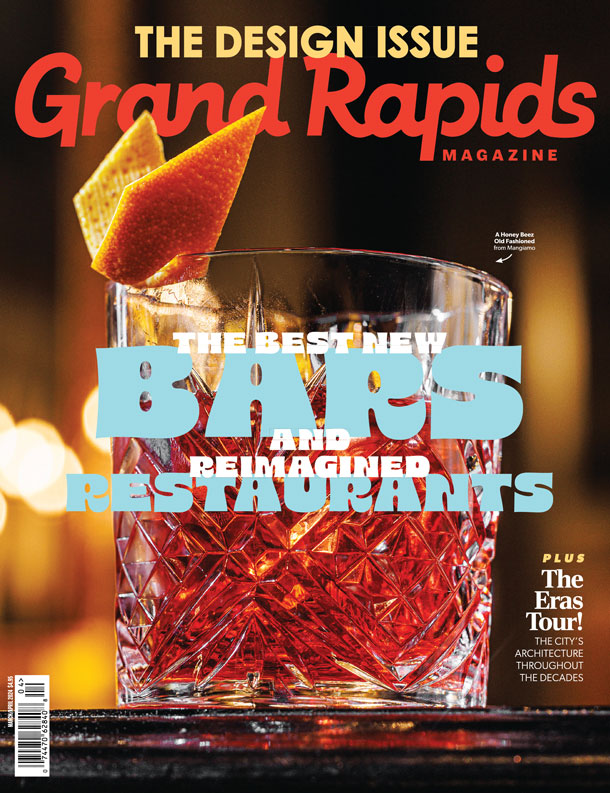Over the years, I’ve had the pleasure of tasting some delicious beers from St. Louis-based Schlafly Beer.
Well, Schlafly now is heading into Michigan and will be on shelves in Grand Rapids before you know it, if not already. It is the 16th state for the brand, which was started more than 30 years ago in St. Louis, a town well-known as the home of Budweiser.
This week, I chatted with CEO Fran Caradonna to see why Schlafly is coming to the Mitten State and what she thinks about operating a brewery in the shadow of Anheuser-Busch.
Caradonna helped explain one of my major frustrations with the beer world, and something I’ve recently talked about with a few brewers: Just because a beer is not trendy does not mean it isn’t popular.
Pat: Why start distributing to Michigan?
Fran: There’s a couple of different reasons. One is that as breweries like ours expand, we expand to contiguous states. We’re in Illinois and Indiana and Ohio, so it made sense from a logistics standpoint.
There is the fact that there are a significant number St. Louisians that vacation in Michigan and we like to follow our crowd. People go there in the summer.
And there’s a Midwestern vibe that lines up with who Schlafly is. There’s also a really good distributor in Michigan that I have personal experience with from my previous history and to have a solid distributor who understands craft is very significant. So, a whole swirl of things that make it a logical next step.
Pat: Michigan is a very proud beer state and loves its local brands. How do you look at that and compete in a market like that?
Fran: We have been proudly the first and largest local brewery in St. Louis for 30 years. Nobody understands the importance of local better than we do, and we love that space. And we have had to share more in the last 10 years than the previous 20 years.
But in other states, our approach is to lead either a special product or with some sort of reputation that precedes us. Again, that idea of locals who spend time there or travel there.
We have a surprising number of expats on the East Coast, especially around D.C. So, for some reason, we have a pocket of fandom there, and we go with that.
Our pumpkin beer leads us into the market, and it creates enough volume, for distributors, to justify bringing in another brand.
Pat: What makes Schlafly’s pumpkin beer special?
Fran: I wish I knew the exact answer to that. For one thing, its quality and consistency is second to none. There are a lot of good pumpkin beers out there, but I don’t think there are many that are better than ours. We tend to win the taste testing; we’re near the top.
I also think Schlafly was one of the early pumpkin beers.
I had a conversation with a reporter about pumpkin beer. His premise was why is pumpkin not as popular as it used to be? He was an East Coast guy. I had to explain it’s still just as popular, it’s just not as trendy.
We’ve oversold by 10,000 cases this year. That caused a few little issues here on the operations side. But I looked up the word “popular,” it said popular means a lot of people like it. Trendy means fashionable. Pumpkin beer was popular before it was trendy, and it is still popular after the trend. It’s not fashionable, but oh my goodness, people are still drinking it.
It also attracts more people from the non-craft world. It’s a very approachable style and it reaches a broad audience.
Pat: You mentioned being St. Louis’ “local” small brewery. What’s it like operating in Budweiser’s backyard?
Fran: The way we lived in that shadow the first 20 years is a lot different than the past 10 years. In the beginning, we were teeny tiny, the first and only (local brewery) for many years. We as craft brewers could look around and we’d look at a national trend and pretty consistently you could assume in St. Louis, it was half of that.
I remember hearing Kim Jordan from New Belgium, way back in the 1990s, someday we’ll hit 5% market share — I don’t know if she said that, but I heard that. At the time, St. Louis was half of what everyone else was. Anheuser-Busch was so dominant, it was dominant culturally, not just a behemoth corporation. It’s part of St. Louis’ DNA that Anheuser-Busch has been there and been a good corporate citizen for a long time. They kept employees working during Prohibition when they didn’t need to. People don’t remember that consciously, but it’s kind of baked into our mindset.
Folks have been loyal to AB, and I tell you that today, it helped make St. Louis an amazing place to sell beer. People are loyal to beer because of AB.
What’s changed the last 10 years, is Anheuser-Busch was bought by a foreign corporation and people reacted to that, folks were disappointed by that. Locals were sad to see the corporate headquarters leave. The other thing that happened, craft beer came into its own across the country and people were embracing craft beer as a style, and those of us around a long time were switching from educating about the category to competing for market share within craft beer. AB is no longer the 400-pound gorilla; instead, we’ve got 70 other small breweries that we compete against here. It’s a whole different kind of competition, but from my point of view it’s welcome.
U.S. Open Cocktail
As the U.S. Open kicks off next week, I’ll share Grey Goose’s official U.S. Open Cocktail. There are more than a million of these sold at the tournament in New York, which is astounding!
Ingredients:
1.25 oz. vodka
3 oz. fresh lemonade
0.5 oz. raspberry liqueur
Garnish: Frozen honeydew melon-ball skewer
Method: Chill a glass for five minutes, fill with ice. Measure and add vodka to the glass, top with lemonade and raspberry liqueur. Garnish with the honeydew melon balls (which do well with some time in a freezer).
The Blonde Bomber
Well, every famous person apparently has some form of a spirit now, including Hall of Fame Pittsburgh Steelers quarterback Terry Bradshaw. Thursday was another one of those fun drink holidays, “National Whiskey Sour Day,” so the brand shared its take on the whiskey sour: The Blonde Bomber — Bradshaw’s nickname, which as a youthful football fan I did not know, despite my dad’s Steelers connection — he moved to Pittsburgh the day after the Immaculate Reception (or so he claims).
2 oz. Bourbon
0.75 oz. lemon juice
0.75 oz. simple syrup
Cherry or lemon wedge garnish
Method: Add ingredients to cocktail shaker, shake and strain into glass with ice. Garnish with preferred fruit.
What’s Pat Drinking?
This week, my wife and I meandered out to the Whitecaps game where they were taking on the affiliate of my beloved Chicago Cubs. There I had a Kusterer Original Weissbier and my wife had a Mitten Brewing West Coast Swing.
Both beers are incredible, award-winning beers and great examples of the amazing non-IPAs so many West Michigan brewers are making.
I also stopped at Founders Brewing for a chat with founder Dave Engbers ahead of the brewery’s 25th anniversary. He’ll be the Drinks with Pat subject next week, but I had the Ultimate Oktoberfest in the taproom, a very tasty barrel-aged Oktoberfest.








Facebook Comments